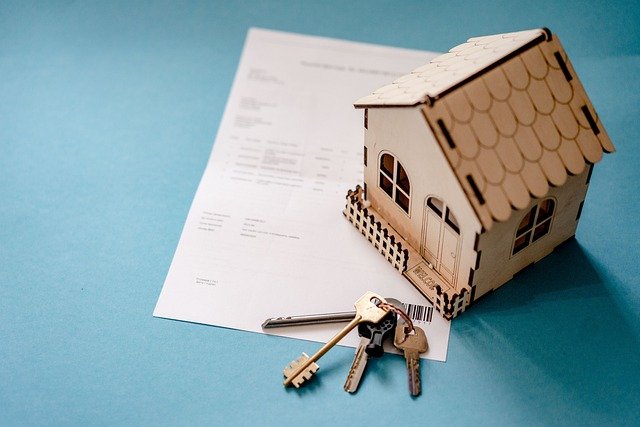A Practical Guide to Rent-to-Own Homes: Exploring a Path Toward Homeownership
For many aspiring homeowners, the traditional path to purchasing a property can seem daunting. Enter rent-to-own homes, an alternative route that bridges the gap between renting and owning. This arrangement offers a unique opportunity for those who may not qualify for a conventional mortgage or need time to build their credit. Let's delve into the intricacies of rent-to-own homes and explore how this option could potentially lead you to homeownership.

What exactly is a rent-to-own home agreement?
A rent-to-own home agreement, also known as a lease-option or lease-purchase agreement, is a contract that allows potential buyers to rent a property for a specified period with the option to purchase it at the end of the lease term. This arrangement typically involves two key components: the rental agreement and the option to buy. During the rental period, a portion of the monthly rent may be applied towards the future purchase price, essentially allowing tenants to build equity while renting.
How does the rent-to-own process typically work?
Understanding the rent-to-own process is crucial for anyone considering this path to homeownership. The process usually begins with negotiating the terms of the agreement, including the length of the rental period, the purchase price of the home, and the amount of rent that will be credited towards the purchase. Once terms are agreed upon, the tenant moves in and begins paying rent, often at a rate slightly higher than market value to account for the portion being set aside for the future purchase. At the end of the lease term, the tenant has the option to buy the home using the accumulated credits and additional financing if needed.
What are the key considerations before entering a rent-to-own agreement?
Before committing to a rent-to-own arrangement, there are several important factors to consider. First, thoroughly research the property and its market value to ensure the agreed-upon purchase price is fair. It’s also crucial to understand your financial obligations, including the monthly rent, option fee (if applicable), and maintenance responsibilities. Additionally, review the terms of the agreement carefully, paying special attention to what happens if you decide not to purchase the home at the end of the lease. Consider seeking legal advice to fully understand your rights and obligations under the contract.
What are the potential benefits and drawbacks of rent-to-own arrangements?
Rent-to-own arrangements offer several potential benefits, including the opportunity to lock in a purchase price in a rising market and the ability to build equity while renting. This option can be particularly attractive for those who need time to improve their credit score or save for a down payment. However, there are also drawbacks to consider. These may include higher monthly payments compared to traditional rentals, the risk of losing money if you decide not to purchase the home, and the possibility of being responsible for maintenance and repairs during the rental period.
What are common pitfalls in rent-to-own agreements and how can they be avoided?
One of the most significant pitfalls in rent-to-own agreements is the potential for unclear or unfair contract terms. To avoid this, ensure all terms are clearly defined in writing, including the purchase price, rental period, and conditions for exercising the purchase option. Another common issue is failing to secure financing at the end of the lease term. To mitigate this risk, work on improving your credit score and saving for a down payment throughout the rental period. Additionally, be wary of scams or predatory practices by thoroughly vetting the property owner and seeking professional advice before signing any agreements.
What steps should be taken to transition from renting to owning in a rent-to-own home?
To successfully transition from renting to owning in a rent-to-own arrangement, start by maintaining open communication with the property owner throughout the rental period. Keep detailed records of all payments made, including the portion applied towards the purchase. As the end of the lease term approaches, begin the process of securing financing well in advance. This may involve working with a mortgage lender to determine your eligibility and options. Conduct a professional home inspection to identify any potential issues before finalizing the purchase. Finally, consult with a real estate attorney to review all documents and ensure a smooth transition to homeownership.
| Provider | Services Offered | Key Features/Benefits |
|---|---|---|
| Home Partners of America | Rent-to-own program | Flexible lease terms, option to purchase at any time during lease |
| Divvy Homes | Rent-to-own platform | Builds portion of each payment towards down payment, personalized savings plan |
| Dream America | Lease-to-own services | No credit check required, option to build equity while renting |
| Verbhouse | Flexible rent-to-own program | Customizable contracts, transparent pricing, financial education resources |
Prices, rates, or cost estimates mentioned in this article are based on the latest available information but may change over time. Independent research is advised before making financial decisions.
While rent-to-own homes offer a unique path to homeownership, they’re not without complexities and potential risks. By thoroughly understanding the process, carefully considering the terms, and being aware of common pitfalls, aspiring homeowners can make informed decisions about whether a rent-to-own arrangement aligns with their long-term goals. As with any significant financial decision, it’s advisable to consult with legal and financial professionals to ensure you’re making the best choice for your individual circumstances.




